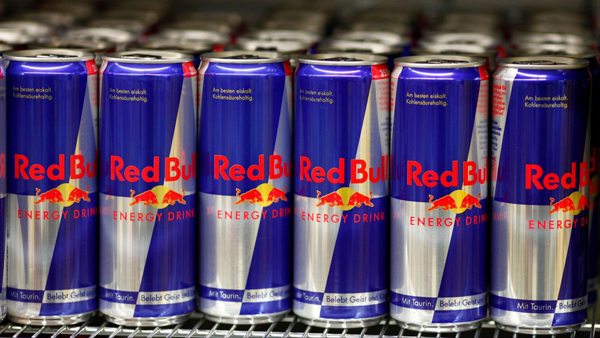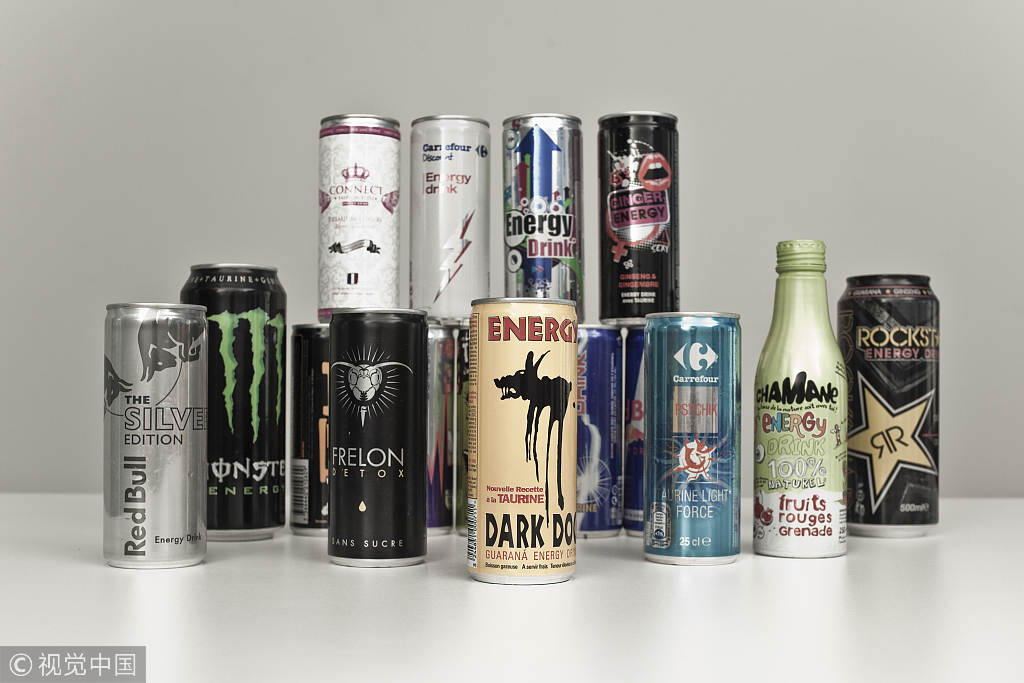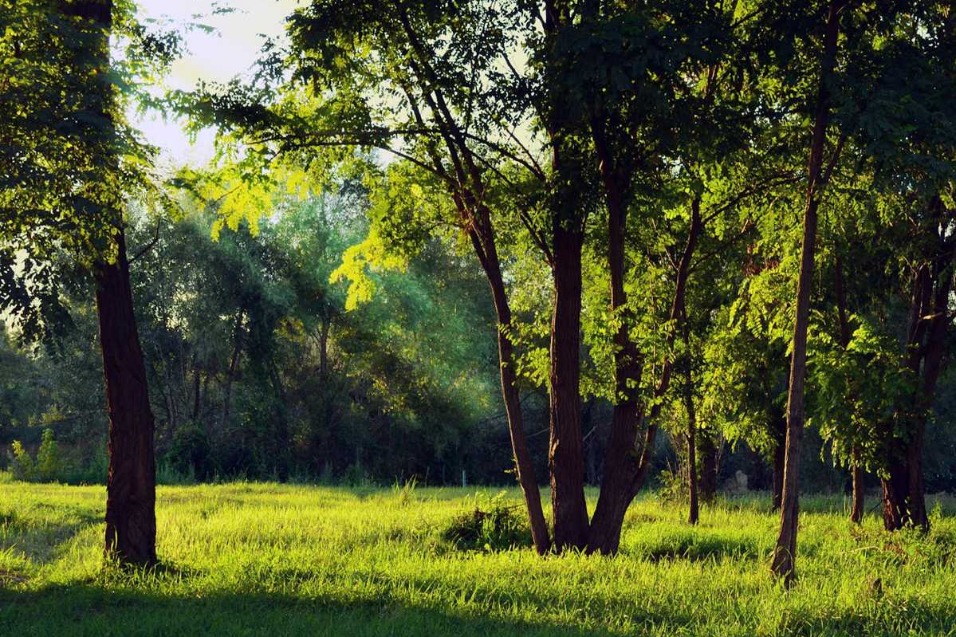关爱儿童,英格兰禁能量饮料,韩国禁咖啡 England and South Korea are cracking down on caffeine for kids
中国日报网 2018-08-31 15:04

儿童和青少年已经成为能量饮料的重要消费群体。但有报道称,一些学生饮用了咖啡因饮料后会出现心悸、头晕、睡眠障碍和多动症等症状。儿童肥胖也是此类饮料带来的一大问题。开学在即,英国和韩国的儿童们会发现,他们要和能量饮料说再见了。

Many adults rely on the added jolt of caffeine to get them through the day. But that’s the last thing kids need, according to the governments of England and South Korea.
很多成年人依赖咖啡因熬过一整天,但英格兰和韩国政府认为,孩子们根本不需要这些。
England woke up to the news that the government is preparing to ban the sale of energy drinks like Red Bull to children amid growing concerns about the negative health impacts of the high-caffeine, high-sugar drinks.
8月30日,英格兰政府宣布将禁止向儿童出售红牛等能量饮料。越来越多的人担心高咖啡因和高糖饮料会损害儿童健康。
The proposed ban only applies to England, but Scotland, Wales and Northern Ireland can all follow suit if their administrations wish. In March, several major supermarket chains announced that they would ban the sale of energy drinks to children under 16.
该禁令仅在英格兰地区适用,苏格兰、威尔士以及北爱尔兰地区的政府如果愿意,也可推行。今年3月,英国几家大型连锁超市宣布禁止旗下超市向16岁以下青少年出售能量饮料。
Meanwhile, South Korea announced plans to ban the sale of coffee in schools by September 14. Korean authorities justified the ban by citing reports of children experiencing dizziness, heart palpitations, trouble sleeping, and nervousness after consuming caffeine.
另外,韩国也已宣布,将于9月14日起禁止在学校销售咖啡。韩国官方还援引报道称,儿童在摄入咖啡因后会出现头晕、心悸、失眠和紧张,以显示这一禁令的正当性。

含糖又含咖啡因,对青少年健康不利
The principal justification for the ban is the high level of caffeine in the energy drinks, which has been linked to a string of health problems for children, including head and stomach aches, as well as hyperactivity and sleep problems.
这一禁令的主要理由是能量饮料中咖啡因含量高,与儿童的一系列健康问题有关,包括头痛和胃痛,以及多动症和睡眠问题。
A 250ml can of Red Bull contains about 80mg of caffeine, roughly the same as a similarly sized cup of coffee, but three times the level of Coca-Cola. Monster Energy, which is often sold in larger cans of 500ml, contains 160mg of caffeine.
一罐250毫升的红牛含有大约80毫克的咖啡因,大约相当于一杯同样大小的咖啡,是可口可乐咖啡因含量的三倍。怪物能量通常以500毫升的大罐出售,含有160毫克的咖啡因。
Energy drinks often also have higher levels of sugar than soft drinks. According to government figures, sugared energy drinks have 60% more calories and 65% more sugar than normal soft drinks and sugar is one of the largest causes of obesity.
能量饮料的含糖量通常也比软饮高。根据英国政府的数据,含糖的能量饮料比普通的软饮料卡路里和糖分含量分别高出60%和65%,而糖是导致肥胖的最主要原因之一。
The teachers’ union NASUWT called last year for the sale of the drinks to under-16s to be banned by all retailers. Its national official for education, Darren Northcott, described the beverages as “legal highs” that helped to fuel bad behavior in schools.
去年,英国教师工会呼吁所有零售商禁止向16岁以下的未成年人出售此类饮料,该机构的教育负责人达伦-诺斯科特称这些饮料是“合法的兴奋剂”,助长了学校的不良行为。
Caffeine is the most commonly used psychoactive substance in the world. It is classified as a stimulant drug for its ability to arouse the central nervous system. Research has identified a range of possible health benefits and risks for adults. But the consumption of caffeine is generally not recommended for kids. The American Academy of Pediatrics, for example, recommends that children avoid high-caffeine energy drinks altogether, stating that “caffeine and other stimulant substances contained in energy drinks have no place in the diet of children and adolescents.”
咖啡因是全球使用最广泛的神经活性物质,由于能够唤醒中枢神经系统,被归类为刺激性药品。研究已经证实了咖啡因对成年人可能存在的多种健康益处和风险,但一般不建议儿童摄入咖啡因。例如,根据美国儿科协会的建议,儿童不应饮用所有的高咖啡因能量饮料,并称“能量饮料中含有咖啡因和其他刺激性物质,儿童和青少年不应该摄入。”
In both England and South Korea, the bans are part of a wider campaign to encourage healthier eating habits, especially among children. South Korean officials have implemented a strategy to deal with rising obesity rates among students, including imposing restrictions on children’s access to energy drinks.
在英格兰和韩国,这一禁令也是在更大范围鼓励健康饮食习惯的举措之一,特别是针对儿童。韩国已采取措施应对学生肥胖率上升的问题,其中包括限制儿童饮用能量饮料。
The English ban on energy drink sales to children is also part of the government’s childhood obesity strategy, since energy drinks, in addition to being high in caffeine, often contain a lot of sugar. Public officials have announced they are conducting a consultation to determine whether the purchasing restrictions will apply at the age of 16 or 18.
英格兰禁止向儿童销售能量饮料也是政府应对儿童肥胖问题策略的一部分,因为能量饮料除了咖啡因含量高,通常还含有大量的糖分。英国公共官员已经宣布,他们正就这一禁令是否适用于16或18岁的青少年展开咨询。
The bans come in response to the reality that, despite strict labeling rules and public awareness campaigns, children are still consuming highly-caffeinated and sugary drinks.
尽管颁布了严格的标识规则,并开展了公共教育活动,但儿童们仍在饮用高咖啡因和高糖饮料,因此英格兰和韩国才会出台这样的禁令。
Under current labeling rules in the UK, for example, any drink that contains over 150 milligrams of caffeine per liter (other than tea or coffee) is required to have a warning label stating that the drink isn’t recommended for children, or for pregnant or breastfeeding women. But, according to the government, more than two thirds of UK children aged 10-17, and nearly a quarter of those aged six to nine, are energy drink consumers.
按照英国目前的标识规则,每升饮料中咖啡因含量超过150毫升(茶和咖啡除外)都需贴上警告标识,表明不建议儿童、孕妇和哺乳期妇女饮用。但英国政府表示,超过三分之二的年龄在10到17岁之间的英国儿童,以及近四分之一的6到9岁之间的儿童都在饮用能量饮料。

In addition to limiting kids’ access to caffeine and energy drinks, the South Korean government has also banned TV commercials for fast food, sugary snacks and high-caffeine beverages during times when most children’s programs air. But after a drastic decline in early 2016, energy-drink sales in the country continued to rise in 2017.
除了限制儿童饮用咖啡因饮料和能量饮料,韩国政府还禁止在大多数儿童节目播出的时段播放快餐、甜食和高咖啡因饮料的电视广告。但在2016年上半年销量大减之后,韩国能量饮料的销量在2017年继续回升。
South Koreans drink an average of 181 cups of coffee a year, by far the most in Asia, according to market research firm Euromonitor. That is more than the 151 consumed per person in the UK but less than the average of 266 cups in the US.
根据欧睿国际市场调研公司的数据,韩国人平均每人每年喝181杯咖啡,这在亚洲是最多的。这比英国人每年人均饮用151杯要多,但低于美国266杯的人均水平。
Many students consume coffee or energy drinks to stay alert to study in an effort to excel in South Korea’s highly competitive and demanding education system.
很多韩国学生饮用能量饮料是为了在学习中保持头脑清醒,以便在韩国竞争激烈且要求苛刻的教育体制中胜出。

当下,能量饮料的销量与日俱增,而青少年和运动员是其主要消费人群。
在中国,虽然暂时缺乏青少年的消费数据,但销量增长全球最快。
英敏特调查显示,纵观全球,2015年,能量饮料销量居前五的国家分别是美国(33亿升)、中国(14亿升)、英国(5.61亿升)、泰国(4.65亿升)和越南(3.51亿升)
小知识:能量饮料与运动饮料有什么区别?
有无咖啡因,是能量饮料与运动饮料的最大区别。
国际运动营养学会对能量饮料的定义是:能量饮料是成分除了水、碳水化合物、维生素、矿物质以外,还包括各种营养物质的混合体(如咖啡因、牛磺酸、氨基酸、瓜拉那、葡萄糖醛酸内酯、肌糖、人参、银杏萃取液等)的一种饮料。
能量饮料的特点在于,咖啡因是其最主要成分,它能刺激中枢神经系统,让大脑误认为身体并不疲倦,从而为运动人群增加能量、缓解疲劳、提高注意力和灵敏度以及增强运动表现。
翻译&编辑:yaning

















 英语点津微信
英语点津微信 双语小程序
双语小程序